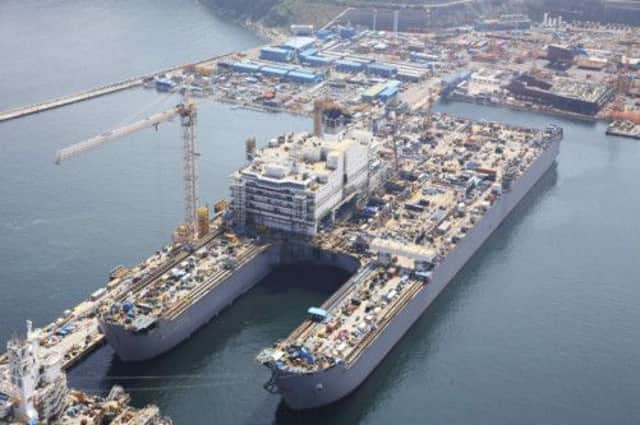Giant catamaran to decommission North Sea oil rigs


Since the 1970s, 500 oil rigs and 45,000 km of pipelines have been installed in the North Sea to tap the reserves that have fed Britain and Norway. But ageing infrastructure and dwindling productivity mean some of the fields are no longer profitable.
Oil companies have considered turning redundant rigs into casinos, hotels or even prisons but most are destined for dismantling to prevent environmental damage from rust or leaks. Oil services companies are developing equipment for a decommissioning market that experts reckon could be worth £30 billion over the next 30 years.
Advertisement
Hide AdAdvertisement
Hide AdEdward Heerema, chief executive of engineering group Allseas, is hoping the Pieter Schelte, the 382-metre-long, 124-metre-wide catamaran he commissioned and named after his father, will capture a large part of the business.
“This is the biggest bet of my career,” said Mr Heerema. “It’s very difficult to show that it’s going to be extremely profitable.”
The Pieter Schelte has already been signed up to remove platforms from Shell’s Brent North Sea field, beginning with Brent Delta in 2015 or 2016.
Over the ship’s lifetime, decommissioning projects could take it from Scotland to the Gulf of Mexico, south-east Asia and on to Brazil and West Africa.
The decommissioning market involves everything from shutting down the field, closing the wells, removing the steel and recycling it. A handful of ships do most of the work.
The concept of the vessel is 25 years old, according to Mr Heerema. But only now has a pipeline of work coincided with his company having the financial muscle to build the ship. A video on the company’s website shows a digital mock-up of the ship, resembling two oil tankers joined together, in action.
The vessel sails up to the oil rig, positioning the steel platform between its two hulls. Hydraulic clamps stick to the underpart of the platform which is then lifted with seeming effortlessness in one quick movement and carried to shore.
The ship can lift up to 48,000 tonnes, more than quadrupling the current top capacity.
Advertisement
Hide AdAdvertisement
Hide AdThe vessel caused controversy in 2008. Schelte Snr was a member of the Nazi SS during the Second World War and was jailed as a collaborator by a Dutch court. Jewish groups complained when they learnt the ship’s name.
“I don’t see the Schelte being anything other than a one-off, but by taking the risk they have cornered the market in advance,” said David Thomas, an analyst at Credit Suisse.
The UK government has stepped in to help oil companies fund decommissioning with tax relief worth about £20bn over the next 30 years. The scheme is meant to free up capital kept aside for decommissioning, to go into fresh exploration and further production.